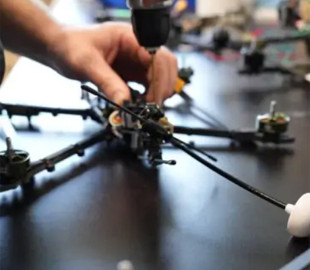In addition to standard FPV drones, volunteers produce bomber drones, multi-functional UAVs “Queen of Hornets”, drones with AI, as well as drones that perform the function of air defense.
The Ukrainian volunteer team “Wild Hornets” creates unmanned aerial vehicles for the Defense Forces of Ukraine, which enable the military to perform a number of tasks. The developers told the details in an interview with Euronews.
It is reported that the staff of “Wild Hornets” has about 25 engineers capable of producing about 100 drones per day. According to the members of the organization, drones help to hold the front line “and even more”.
“Without drones, the front line in Dnipro or Zaporizhzhia would have advanced significantly. Drones can be used for defensive and offensive operations,” — said team member Ivan.
Wild Hornets produce various types of FPV drones, including a standard model that can carry a payload of 1.5-3 kg and accelerate up to 160 kilometers per hour. These UAVs are used as kamikaze.
200% Deposit Bonus up to €3,000 180% First Deposit Bonus up to $20,000In addition, the company manufactures bomb-dropping drones that can be used multiple times. Among them are multifunctional large UAVs “Queen of Hornets”, capable of carrying up to 9.5 kg at a distance of up to 30 kilometers. These drones also deliver food and other cargo to the military.
Artificial intelligence (AI) drones also play an important role in modern warfare. According to volunteers, some of these drones can fly autonomously and detect targets at a distance of 300 to 400 meters. The “Wild Hornets” use a system built on a Ukrainian microcomputer, independent of Chinese components, which can track multiple targets simultaneously, distinguishing between people and equipment.
“Depending on the task, these drones can engage targets using manual selection, preselection, or experimental tasks, making them effective tools for combat testing,” — notes Ivan.
At the same time, Ivan emphasized that FPV drones with artificial intelligence are not able to distinguish a Russian soldier from a Ukrainian one, so it is likely that an operator will always be involved in one form or another.
The company also creates drones that perform the function of air defense (ADF). We are talking about drones that can hit other drones, such as Russian reconnaissance UAVs and the Shahed strike.
As Ivan points out, drones will increasingly displace traditional vehicles from the battlefield. According to him, the war in Ukraine showed that the future belongs to artificial intelligence and robotics.

